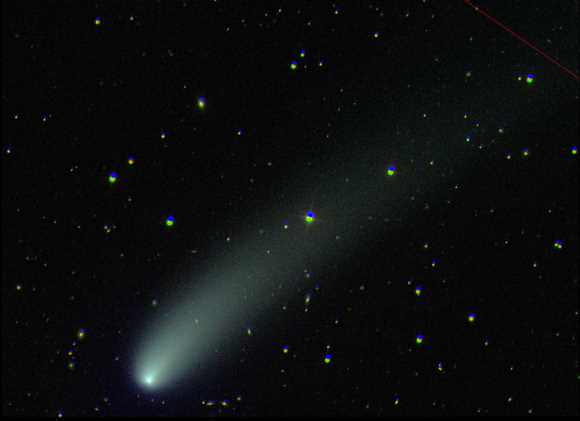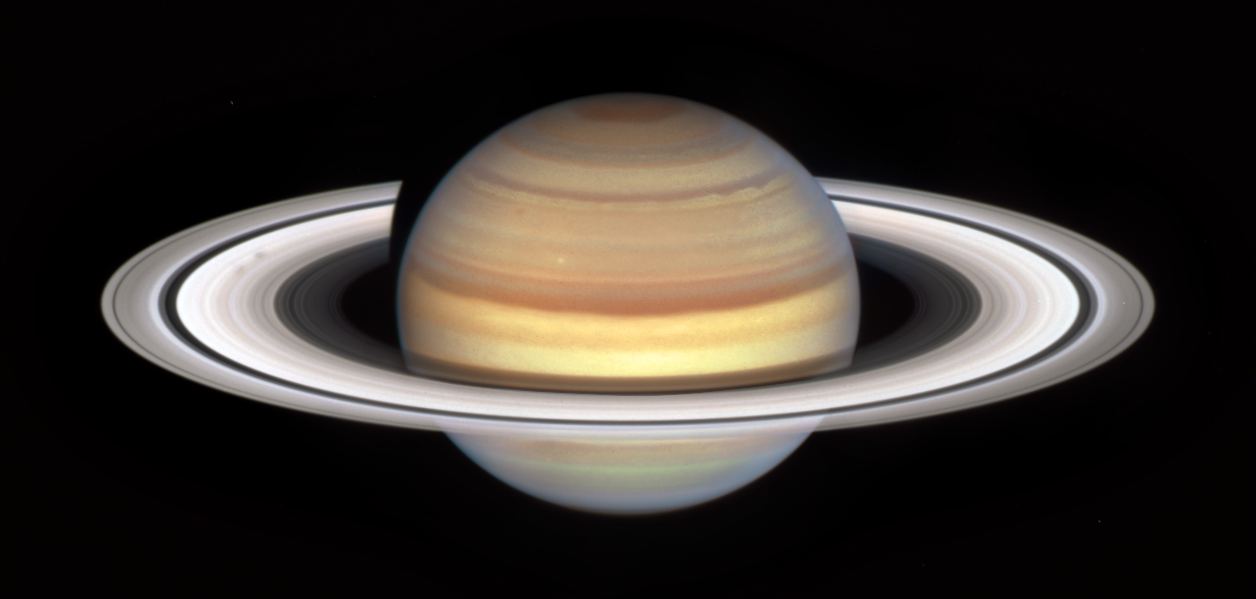Sometimes, it’s hard to remember that Earth is constantly being bombarded by literally tons of space debris daily. The larger bits form what we know as shooting stars, and most burn up in the atmosphere. Still, throughout our planet’s history, giant versions have caused devastation unlike anything else seen on this planet. Tracking these types of objects is typically done from the Earth, but a new mission set out by researchers in Italy has a novel idea – why not try to learn more about potential impactors by watching them hit the far side of the Moon?
Continue reading “A New Mission Watches Meteoroids Hit the Far Side of the Moon”Even Stars Can Get the Hiccups

Stars come in all manner of sizes and temperatures. Many of the massive ones are nearing the end of their lives and at some point in the next few million years, will detonate as supernova explosions. Observing the early stages of these events is tricky though as we can never be sure when they will go pop! It would be great if we could narrow down the timeframe to help hone our search. One theorised phase is that massive stars can ‘hiccup’ with its core expanding and contracting rapidly. This is known as ‘pulsational pair-instability’ and finally a team of astronomers have actually caught a star having the hiccups!
Hotter White Dwarfs Get Puffier

When our Sun dies, it will turn into a white dwarf. They are a common aspect of stellar evolution and a team of researchers have now turned their attention onto them. They have just completed a survey of 26,000 white dwarfs and confirmed a long-predicted theory that the hotter the star, the puffier it is! This new study will help us to understand white dwarfs and the processes that drive them.
NASA to Probe the Secrets of the Lunar Regolith

Gaze up at the Moon on any night and you will see a barren world displaying all manner of shades of grey. Aside from the obvious craters and lunar maria, the surface of the Moon is covered in the fine, dusty lunar regolith. The Apollo astronauts in the 60’s and 70’s learned that it was electromagnetically charged and was very abrasive posing a problem for mechanical equipment. Now a new payload on the Commercial Lunar Payload Services initiative will explore the regolith even further.
NOIRLab Launches Collection of Hi-Res Images of 88 IAU-recognized Constellations
Located in Tuscon, Arizona, the National Optical-Infrared Astronomy Research Laboratory (NOIRLab) is a national facility consisting of four observatories that provide astronomers affiliated with any US institution with access to observing time. As part of its mission to advance astronomy and science education, NOIRLab recently announced the release of the 88 Constellations Project, a collection of free, high-resolution, downloadable images of all IAU-recognized constellations. This project is an educational archive that is free for all and includes the largest open-source all-sky photo of the night sky.
Continue reading “NOIRLab Launches Collection of Hi-Res Images of 88 IAU-recognized Constellations”Saturn’s Rings Might Be Really Old After All
Saturn’s rings are among the most glorious, stunning, and well-studied features in the Solar System. However, their age has been difficult to ascertain. Did they form billions of years ago when the planet and the Solar System were young? Or did they form in the last few hundred millions of years?
The latest new research shows that the iconic rings are, in fact, very old.
Continue reading “Saturn’s Rings Might Be Really Old After All”Covering an Asteroid With Balls Could Characterize Its Interior
Exploring asteroids and other small bodies throughout the solar system has gotten increasingly popular, as their small gravity wells make them ideal candidates for resource extraction, enabling the expansion of life into the solar system. However, the technical challenges facing a mission to explore one are fraught – since they’re so small and variable, understanding how to land on one is even more so. A team from the University of Trieste in Italy has proposed a mission idea that could help solve that problem by using an ability most humans have but never think about.
Continue reading “Covering an Asteroid With Balls Could Characterize Its Interior”New Image Revealed by NASA of their New Martian Helicopter.
Ingenuity became the first aircraft to fly on another world in the first half of 2021. It explored the Martian terrain from above proving that powered air flight was a very efficient way to move around alien worlds. Now NASA have released a computer rendering of their next design, the Mars Chopper!
Continue reading “New Image Revealed by NASA of their New Martian Helicopter.”NASA’s Parker Solar Probe Makes its Record-Breaking Closest Approach to the Sun
In August 2018, NASA’s Parker Solar Probe (PSP) began its long journey to study the Sun’s outer corona. After several gravity-assist maneuvers with Venus, the probe broke Helios 2‘s distance record and became the closest object to the Sun on October 29th, 2018. Since then, the Parker probe’s highly elliptical orbit has allowed it to pass through the Sun’s corona several times (“touch the Sun”). On December 24th, 2024, NASA confirmed that their probe made its closest approach to the Sun, passing just 6 million km (3.8 million mi) above the surface – roughly 0.04 times the distance between the Sun and Earth (0.04 AU).
Continue reading “NASA’s Parker Solar Probe Makes its Record-Breaking Closest Approach to the Sun”Meteor Showers May One Day Help Protect Humanity!

For centuries, comets have captured our imagination. Across history they have been the harbingers of doom, inspired artists and fascinated astronomers. These icy remnants of the formation of the Solar System hold secrets to help us understand the events nearly 5 billion years ago. But before these secrets can be revealed, comets have to be studied and to study them they need to be found. A team of researchers have developed a technique to hunt down comets based upon data from meteor showers and to assess if they pose any threat to us here on Earth!
Continue reading “Meteor Showers May One Day Help Protect Humanity!”





